As a key equipment in modern manufacturing, the multi-functional application of slitting machine from rough machining to fine cutting has significantly improved the efficiency and precision of material processing. Here's a systematic breakdown of its multi-functional applications:
First, the basic working principle of the slitting machine
The slitting machine uses cutting media such as blades, lasers, or high-pressure water jets to cut coils (such as metals, films, paper, composite materials, etc.) longitudinally according to a preset width or shape. The core process includes unwinding→ web guiding → cutting → winding, and the control system adjusts the tension, speed and cutting accuracy.
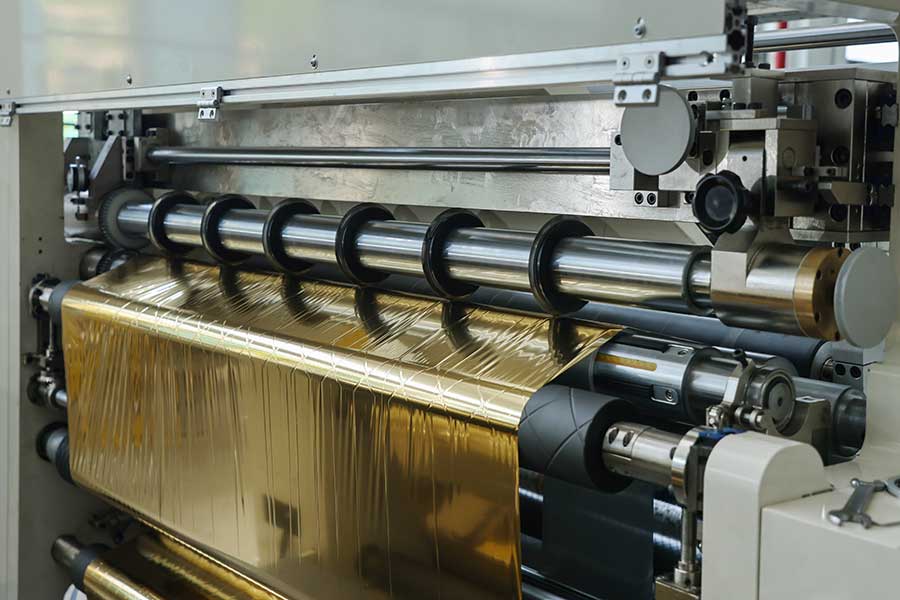
Second, the advanced application from rough machining to fine cutting
1. Roughing stage: efficient slitting
• Application scenario: Preliminary slitting or edge removal of materials, with low precision requirements (more than ±1mm) and focus on efficiency.
• Technical features:
◦ Use a high-strength round knife or shear knife to adapt to thick plates (e.g., steel plate, rubber plate).
◦ High speed operation (100-300 m/min), suitable for mass production.
◦ Case: Preliminary slitting of metal coils, which is convenient for subsequent deep processing.
2. Semi-finishing stage: standardized slitting
• Application scenarios: Medium accuracy (±0.1mm-±0.5mm), such as PCB substrates and packaging films in the electronics industry.
• Technical features:
◦ Servo control system is used to adjust the tension to reduce the tensile deformation of the material.
◦ Equipped with in-line detection (e.g., CCD camera) to monitor edge quality in real time.
◦ Case: Lithium battery pole piece slitting to ensure width consistency.
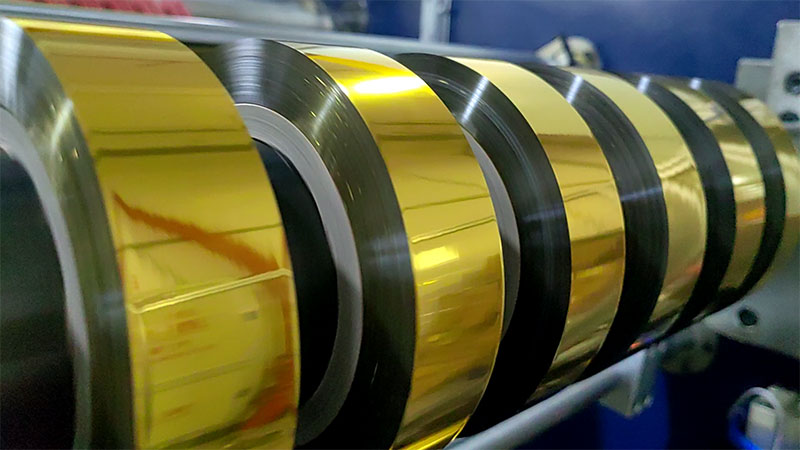
3. Fine cutting stage: high-precision machining
• Application scenarios: micron-level accuracy (within ±0.01mm), such as optical film and ultra-thin copper foil.
• Technical features:
◦ Use laser slitting or air-suspended round knives to avoid mechanical stress on the material.
◦ Constant temperature environment control to reduce thermal deformation.
◦ Case: Slitting of flexible substrate for OLED display, no burrs at the edges.
Third, multi-functional expansion application of slitting machine
1. Compound slitting
◦ Simultaneous completion of slitting and composite processes (such as film + aluminum foil) for the processing of barrier layers in food packaging.
2. Special-shaped cutting
◦ Non-straight cutting of curves and wavy shapes by numerical control system (CNC) is suitable for automotive interiors or medical materials.
3. Intelligent upgrade
◦ Integrated AI algorithm predicts blade wear and automatically adjusts cutting parameters; The Internet of Things (IoT) enables remote monitoring.
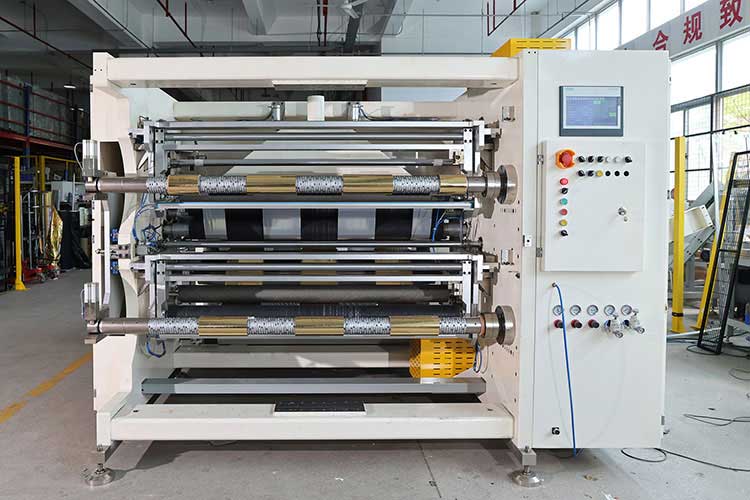
Fourth, industry application cases
• New energy field:
Power battery separator slitting requires a dust-free environment, with an accuracy of ±2μm, and the use of static elimination and ultrasonic cutting technology.
• Packaging industry:
High-speed slitting of BOPP film (600 m/min) with automatic tool change system to reduce downtime.
Fifth, technical challenges and future trends
• Challenges: Tension control of ultra-thin materials (e.g. ≤5 μm), tool life of highly hardness materials (carbon fiber).
•Trend:
◦ Green manufacturing: Low energy consumption design, reduce material waste.
◦ Modular slitting machine: quickly switch between different process requirements.
epilogue
The technological evolution of slitting machines is driving the manufacturing industry towards high-precision and flexible production. The multi-functional integration from roughing to fine cutting not only improves efficiency, but also expands the boundaries of its application in high-end fields. In the future, with the development of intelligence and new materials, slitting technology will further break through the physical limits.

The core criterion for judging the quality of a ribbon slitting machine is its ability to avoid slitting losses.
03. January, 2026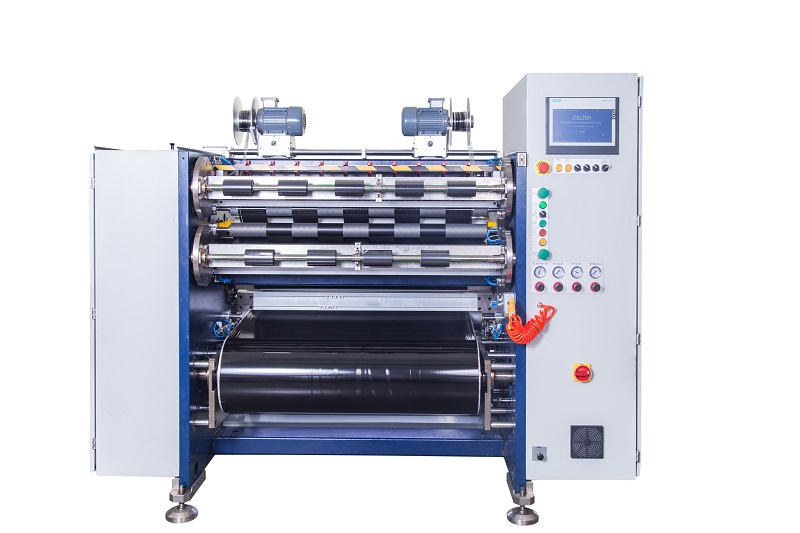
With a wide range of devices on the market, decision-makers are often caught up in the triple factor: price, brand, and performance.
03. January, 2026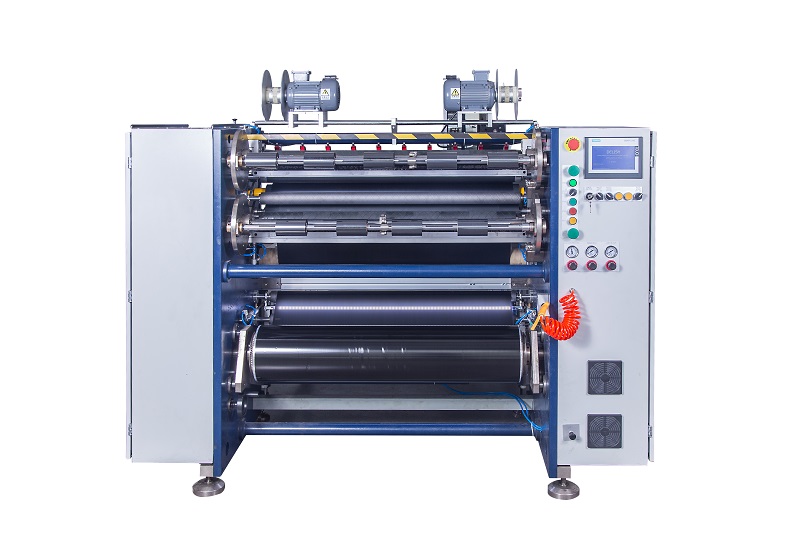
how to choose a slitting machine that truly suits your needs? Here are five key points you must know before buying.
03. January, 2026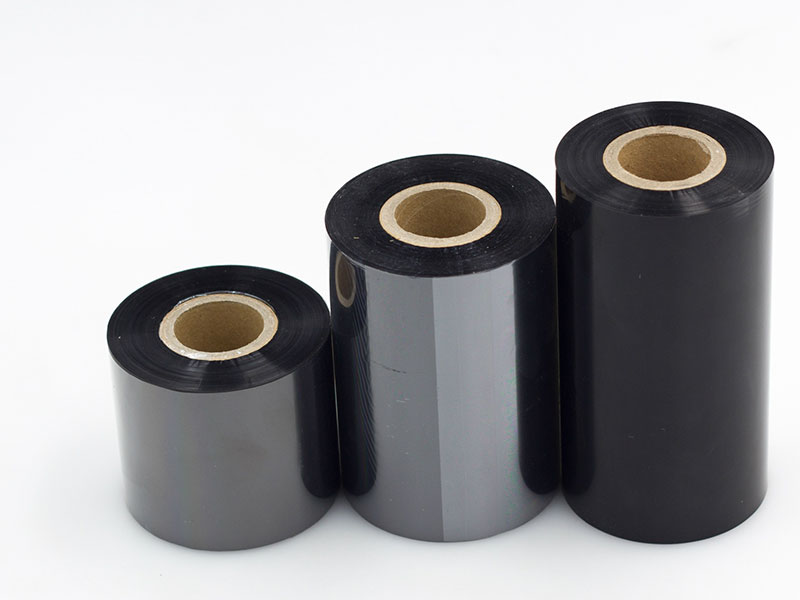
Finding the reliable way to industrial ribbon slitting machines is a comprehensive practice of precision engineering, intelligent control and system optimization.
02. January, 2026
By mastering these three forces, you will master the weapon to cut out a brilliant future in the fierce competition.
02. January, 2026